Achieving artistry and precision in your drawings or documents can be a rewarding endeavor, but the presence of graphite shine can undermine your efforts.
This elusive shimmer, arising from the reflective qualities of pressed graphite, can mar the clarity and professionalism of your work.
Fortunately, the journey to rid yourself of graphite shine is a path well-trodden, replete with techniques and strategies.
From the careful selection of erasers and paper to the judicious application of fixative sprays, mastering the art of eradicating graphite shine is a crucial skill for artists, illustrators, and anyone seeking a polished presentation.
In this exploration, we delve into effective methods and insights to reclaim the pristine allure of your creations.
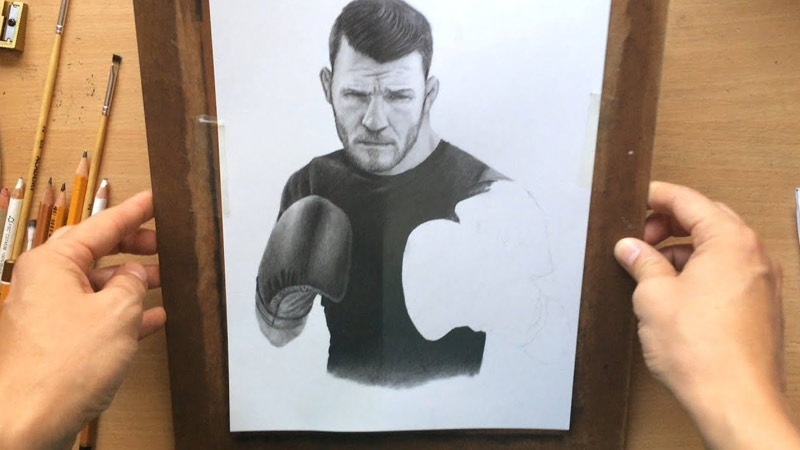
What Is Graphite Shine?
Graphite shine, also known as pencil shine or pencil marks, refers to the reflective or shiny appearance that can occur on paper or other surfaces when graphite from pencils or similar writing instruments is applied with a certain level of pressure.
This phenomenon is more noticeable on smooth or glossy surfaces, as the graphite can leave a polished or reflective mark.
Graphite, the primary material in pencils, is a form of carbon that leaves a mark on surfaces when applied. When pressure is exerted on the pencil, the graphite particles are pressed into the surface, creating a visible mark.
Graphite shine can be especially problematic in artwork or when you want a clean and professional appearance in documents.
How to Get Rid of Graphite Shine?
Graphite shine, also known as pencil shine or pencil marks, occurs when the graphite from pencils or other writing instruments leaves shiny or reflective marks on paper or other surfaces.
This can be especially problematic in artwork or when you want to present a clean and professional document.
Here are some steps you can take to get rid of graphite shine:
1. Erase Carefully
Using a good-quality eraser is the first step in removing graphite shine. Choose an eraser that is soft and well-suited for the type of paper you’re working on.
Apply gentle, even pressure to the shiny area, and use a back-and-forth motion. However, be cautious not to press too hard, as this can lead to paper damage or create indentations.
2. Kneaded Eraser
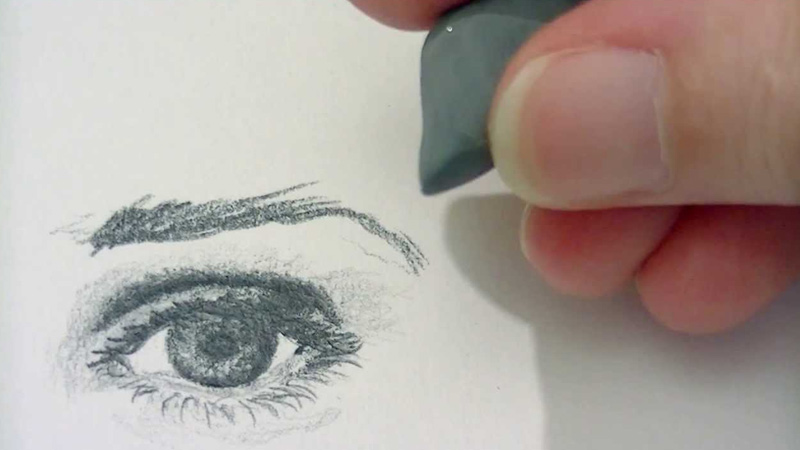
Kneaded erasers are a versatile tool for artists and are especially effective at lifting graphite without harming the paper.
To use one, knead it gently in your hand to warm it up and make it pliable. Then, use a dabbing or blotting motion on the shiny area. Kneaded erasers can be incredibly effective in precision work.
3. Art Gum Eraser
Art gum erasers are designed specifically for artists and are known for their effectiveness in removing graphite.
They are softer than regular erasers, which helps prevent paper damage. Apply gentle pressure and use a circular motion to lift the graphite from the paper.
4. White Vinyl Eraser
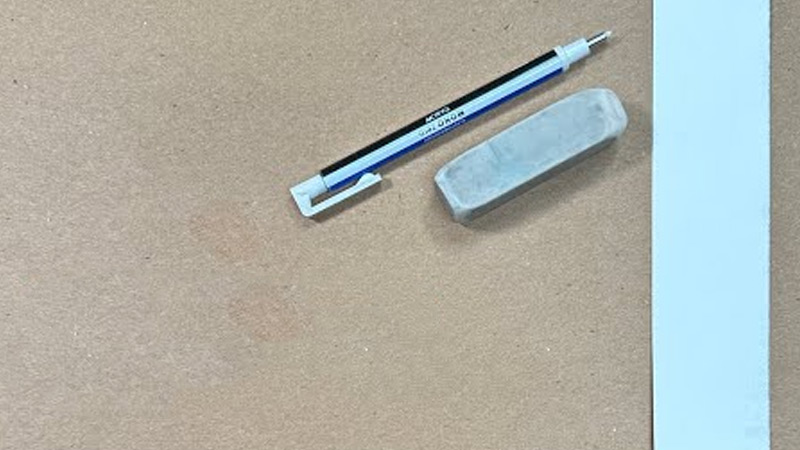
White vinyl erasers are another option for removing graphite shine. They are relatively soft and less likely to damage paper compared to some other erasers.
Use gentle pressure and a back-and-forth motion to remove the graphite marks.
5. Microfiber Cloth
A clean, soft microfiber cloth can be used to gently rub the shiny area. This method can be effective at lifting some of the graphite without causing any harm to the paper.
Avoid using paper towels or rough cloths, as they can potentially scratch the surface.
6. Blotting Paper
Place a sheet of blotting paper or a clean piece of unprinted newsprint over the shiny area. Then, use a bone folder or a smooth, flat object to apply gentle pressure.
The blotting paper will help absorb some of the graphite and reduce the shine.
7. Spray Fixative
For artwork, using a fixative spray can be a preventative measure to avoid graphite shine in the first place.
This spray creates a protective barrier that seals the graphite and prevents it from reflecting light. Always follow the instructions on the spray can and use it in a well-ventilated area.
8. Avoid Touching the Shiny Area
Minimize handling of the paper, especially after you’ve successfully removed the graphite shine.
The oils from your fingers can exacerbate the issue. If possible, handle the paper by its edges or use gloves to prevent further smudging.
9. Preventative Measures

To prevent graphite shine, develop a light touch when writing or drawing with pencils. Also, consider using matte or textured paper, as it is less likely to reflect light and show pencil marks.
Choosing the right combination of pencil and paper can make a significant difference in preventing shine.
10. Photocopy or Scan
As a last resort, consider making a photocopy or scanning the original document. From the clean digital copy, you can print a version without any graphite shine.
This ensures you have a pristine copy for important documents or presentations.
What Are the Reasons Graphite Shines During Drawing?
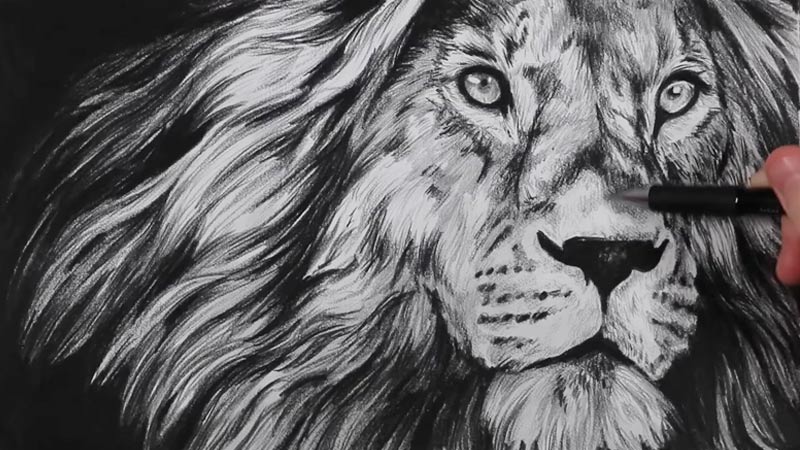
Graphite shine can be especially problematic in artwork or when you want a clean and professional appearance in documents.
Graphite can appear shiny or reflective during painting for several reasons:
Excessive Pressure
When an artist applies excessive pressure while using a pencil or charcoal, the graphite particles can become tightly compacted on the paper’s surface.
This compaction can make the graphite appear shiny as it reflects light more effectively due to the smooth, compressed surface.
Glossy Paper
The type of paper used can greatly affect the appearance of graphite shine. Smooth or glossy paper surfaces provide fewer irregularities for the graphite to adhere to, resulting in a more reflective appearance.
Matte or textured paper, on the other hand, has a rougher surface that disperses light, making graphite shine less noticeable.
Pencil Hardness
Different pencil grades produce varying levels of shine. Softer pencils (e.g., 6B or 8B) contain more graphite and can produce a darker mark but are also more prone to shine due to their higher graphite content.
Harder pencils (e.g., 2H or 4H) contain less graphite and produce lighter marks with less shine.
Blending Techniques
The way an artist blends graphite can impact its shine. Using blending tools like blending stumps, trillions, or fingers can spread the graphite particles evenly, reducing shine. However, over-blending or using tools with a lot of pressure can still lead to shine.
Erasing
Excessive erasing or using abrasive erasers can damage the paper’s surface and make it more prone to shine. Erasing should be done gently to avoid wearing down the paper.
Oils and Moisture
Natural oils from the skin, even the slightest moisture, or humidity in the environment can sometimes interact with the graphite and paper surface, causing shine.
This is why artists often use a barrier sheet or drawing glove to keep their hands from touching the paper.
Surface Reflection
The angle of the light source and the viewing angle of the artwork can also affect the perception of graphite shine. A change in lighting conditions or viewing angle may make shine more or less noticeable.
Quality of Paper
The quality and weight of the paper can influence the likelihood of graphite shine. Higher-quality, heavyweight papers tend to be more resilient and less prone to shine compared to thin or low-quality papers.
How to Prevent Your Drawing From Graphite Shine?
Preventing your drawing from graphite shine involves a combination of techniques and materials that help prevent the graphite from becoming reflective or shiny.
Here are some steps you can take:
Use a Fixative Spray
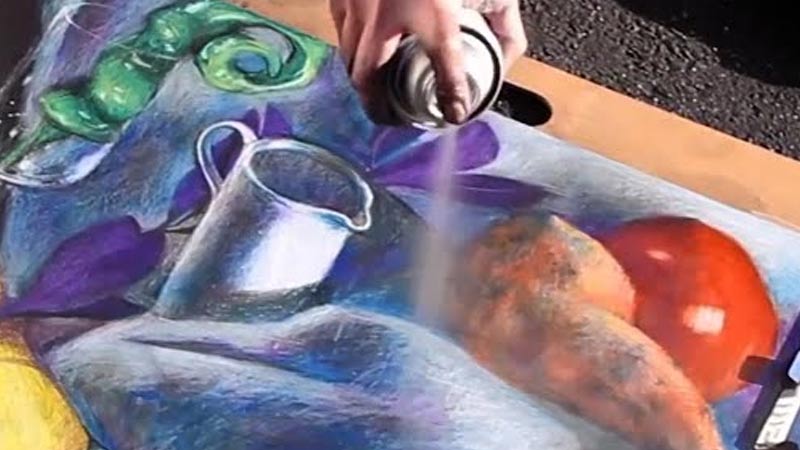
After completing your drawing, consider applying a fixative spray. This clear, protective coating helps seal the graphite and prevents it from reflecting light. Follow the manufacturer’s instructions for proper application.
Choose the Right Paper
Opt for a paper with a matte or textured surface. These surfaces are less likely to show pencil marks and can help reduce the likelihood of graphite shine. Avoid glossy or heavily coated papers.
Control Your Pressure
Be mindful of the pressure you apply when using pencils. Use a lighter touch to avoid pressing the graphite too deeply into the paper, which can lead to shine.
Frequently Sharpen Your Pencils
Keep your pencils sharp. Dull pencils require more pressure to make a mark, which can increase the likelihood of graphite shine. Regularly sharpening your pencils helps maintain a light touch.
Use a Blending Tool
Instead of relying solely on the pencil for shading, consider using a blending tool like a blending stump or your finger (if clean) to spread the graphite more evenly. This can help avoid excessive pressure.
Protect the Drawing Surface
Place a clean sheet of paper under your hand to prevent oils and dirt from your skin from smudging the drawing. You can also use a piece of transparent film or a drawing glove to achieve the same effect.
Avoid Excessive Erasing
Limit the use of erasers, especially hard or abrasive ones. Excessive erasing can wear down the paper’s surface and make it more susceptible to graphite shine.
Work from Top to Bottom
If possible, work from the top of the page down to avoid resting your hand on areas you’ve already drawn. This minimizes the risk of smudging and shine.
Seal Your Drawing in a Portfolio
If your drawing is complete and you’re concerned about potential damage or shine, consider placing it in a portfolio with protective sleeves. This can help shield it from external factors.
Store in a Cool, Dry Place
Ensure that your drawing is stored in a controlled environment. Avoid excessive heat, humidity, or direct sunlight, as these factors can contribute to the degradation of the paper and the appearance of graphite shine.
FAQs
What is graphite shine and why does it occur?
Graphite shine is the reflective appearance left on paper by pencil marks. It occurs when graphite particles are compacted and smooth, often due to excessive pressure or specific drawing techniques.
What is the best eraser for removing graphite shine?
Kneaded erasers and art gum erasers are excellent choices for removing graphite shine. They are softer and less likely to damage the paper compared to regular erasers.
Can I use a microfiber cloth to remove graphite shine?
Yes, a clean, soft microfiber cloth can be effective. Gently rub it over the shiny area to lift some of the graphite. Avoid using rough cloths or paper towels, as they can scratch the surface.
How can I prevent graphite shine in the first place?
To prevent graphite shine, use a light touch when drawing with pencils. Choose matte or textured paper, and consider using a fixative spray to seal the graphite.
Are there any risks associated with removing graphite shine?
Yes, if not done carefully, attempting to remove graphite shine can potentially damage the paper. It’s important to use gentle techniques and choose the right eraser for the job.
To Wrap Up
In the quest to eliminate graphite shine from drawings and documents, a nuanced approach is paramount.
The reflective nuisance can be conquered through a combination of careful techniques and material choices.
Opt for soft erasers like kneaded or art gum erasers, or employ gentle methods like microfiber cloth or blotting paper.
Preventative measures, such as adjusting pencil pressure and using fixative sprays, play a pivotal role. Equally important is paper selection, with matte or textured surfaces being less susceptible.
Ultimately, success hinges on a delicate balance of artistry and technique, ensuring your creations remain clear, pristine, and free from the irksome glare of graphite shine.
Leave a Reply